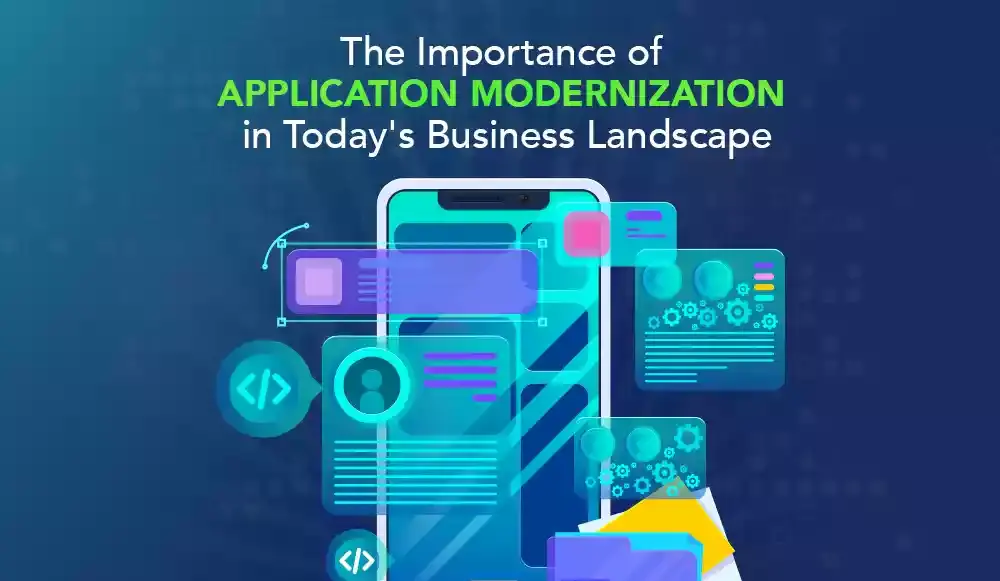In today’s ever-evolving business landscape, they are staying competitive means staying updated with the latest technologies and trends.
This includes modernizing your applications to ensure they are efficient, scalable, and secure. Application modernization is updating legacy applications to meet modern standards and requirements.
Why is application modernization important?
- Increased efficiency: Modern applications are designed to be more efficient, with faster response times, streamlined workflows, and automated processes. This can lead to significant cost savings and increased productivity.
- Improved scalability: As your business grows, your applications need to be able to handle increased traffic and data volume. Modernized applications are designed to be more scalable, allowing you to handle more users and data without sacrificing performance.
- Enhanced security: Legacy applications are often vulnerable to security threats due to outdated technology and lack of updates. Modernized applications are designed with the latest security standards and protocols to protect against cyber threats.
- Better user experience: Modernized applications are designed with the user in mind, with intuitive interfaces and user-friendly features that enhance the user experience.
How to modernize your applications?
- Assess your current applications: Conduct a thorough assessment of your existing applications to identify areas that require modernization.
- Define your modernization strategy: Determine the best approach to modernizing your applications, whether it’s through migration, re-platforming, or re-architecting.
- Choose the right technology: Select the appropriate technology stack to support your modernized applications, taking into account your business needs and goals.
- Test and deploy: Test your modernized applications to ensure they meet the desired performance standards and deploy them to your production environment.
Conclusion:
Application modernization is crucial for staying competitive in today’s business landscape. It enables businesses to improve efficiency, scalability, security, and user experience. By following the steps outlined above, you can successfully modernize your applications and stay ahead of the curve.
Compatibility with existing infrastructure is a crucial consideration when modernizing your applications.
Here are a few steps you can take to ensure compatibility:
- Conduct a compatibility assessment: Before starting the modernization process, assess your existing infrastructure to identify any potential compatibility issues. This will help you plan for any necessary upgrades or modifications.
- Use compatible technologies: When selecting the technology stack for your modernized applications, choose technologies that are compatible with your existing infrastructure. This will help ensure that your applications can seamlessly integrate with your current systems.
- Plan for integration: Plan for how your modernized applications will integrate with your existing infrastructure, including data storage, APIs, and other systems. This will help ensure that your applications can communicate effectively with your current systems.
- Test thoroughly: Thoroughly test your modernized applications to ensure that they are compatible with your existing infrastructure. This includes testing for compatibility with different operating systems, databases, and other technologies.
- Plan for scalability: When modernizing your applications, plan for scalability to ensure that they can handle future growth and changes to your infrastructure. This may require upgrading your infrastructure or implementing new technologies to support your modernized applications.
By taking these steps, you can help ensure that your modernized applications are compatible with your existing infrastructure and can seamlessly integrate with your current systems. This will help you realize the full benefits of application modernization and stay competitive in today’s business landscape.






